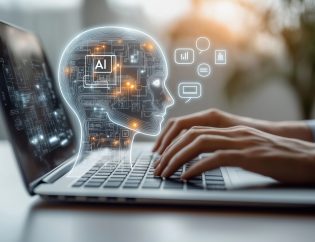The recruitment landscape is rapidly evolving. Technology has transformed how companies find and attract talent, offering tools for efficiency, reach, and data-driven decision-making. However, amidst this digital revolution, the human element of recruitment remains crucial.
This blog post explores the critical balance between technology and the human touch in recruitment. At firstPRO we'll discuss the benefits and limitations of each, and provide strategies for creating a successful hybrid approach.
The Rise of Technology in Recruitment
From the early days of job boards to today's AI-powered platforms, technology has revolutionized recruitment.
Benefits of technology in recruitment:
Increased efficiency and speed:Automation tools streamline repetitive tasks like resume screening and interview scheduling. This allows recruiters to dedicate more time to strategic activities such as building relationships with candidates, understanding client needs, and developing targeted recruitment strategies. For example, AI-powered tools can quickly analyze resumes to identify candidates with the required skills and experience, freeing up recruiters to focus on assessing cultural fit and soft skills.
Expanded reach:Online platforms and social media channels provide access to a wider talent pool, including passive candidates who may not be actively searching for new opportunities. This expanded reach allows companies to connect with talented individuals from diverse backgrounds and locations, increasing the chances of finding the best fit for each role.
Data-driven decision-making:Analytics tools provide valuable insights into candidate behavior and recruitment performance. By tracking metrics such as application completion rates, time-to-hire, and candidate source channels, companies can identify areas for improvement and make more informed decisions about their recruitment strategies. This data-driven approach allows for continuous optimization of the recruitment process, leading to better outcomes and improved ROI.
Reduced Bias:AI-powered tools can help mitigate unconscious bias in the hiring process by focusing on skills and qualifications rather than demographic factors. By objectively assessing candidates based on their abilities and experience, these tools can help ensure a fairer and more inclusive selection process. This can lead to a more diverse workforce and reduce the impact of human biases that may inadvertently influence hiring decisions.
Is AI the Future of Recruitment? Find Out Here.
The Enduring Importance of Human Touch
While technology offers significant advantages, it cannot fully replace the human element in recruitment.
The human touch is essential for:
Building rapport and trust with candidates:Personal interactions, whether in-person or virtual, allow recruiters to establish genuine connections and create a positive candidate experience.
Assessing soft skills and cultural fit:Technology can evaluate hard skills, but human judgment is crucial for understanding a candidate's personality, communication style, and how they might integrate into a team.
Providing personalized feedback and guidance:Candidates appreciate constructive feedback and career advice, which is best delivered through personalized conversations.
firstPRO's recruiters prioritize building genuine connections with candidates through personalized communication and empathetic listening, understanding their career goals and aspirations.
Striking the Right Balance: Strategies for Success
Leveraging Technology Effectively:
Applicant Tracking Systems (ATS): These systems help manage applications, track candidate progress, and streamline communication.
AI-powered tools: Use AI for initial screening, candidate matching, and identifying potential biases in job descriptions.
Social media and professional networking platforms: Engage with potential candidates on platforms like LinkedIn and industry-specific forums.
Video interviewing: Conduct initial interviews virtually to save time and assess communication skills.
Maintaining the Human Element:
Personalized communication: Tailor your communication to each candidate, addressing their individual needs and concerns.
Emphasize empathy and active listening in interviews: Show genuine interest in candidates' experiences and aspirations.
Provide timely and constructive feedback: Keep candidates informed throughout the process and offer helpful feedback, even if they are not selected.
Build relationships with candidates: Nurture relationships with potential candidates, even those not selected for the current role, as they may be a good fit for future opportunities.
Addressing Potential Challenges
It's crucial to acknowledge the potential challenges of balancing technology and human touch in recruitment. Keep your eyes wide open on this:
Dehumanizing the process: Over-reliance on technology can lead to impersonal interactions and a negative candidate experience. Candidates often invest significant time and effort in applying for jobs. When they receive only automated rejections or generic feedback, it can be discouraging and frustrating. This lack of personalized communication can make candidates feel undervalued and overlooked, leading to a negative perception of the company.
Algorithmic bias: AI tools, if not carefully designed and monitored, can perpetuate existing biases in hiring. AI learns from the data it's fed. If that data reflects existing biases in hiring (e.g., historical preference for male candidates in tech), the AI will perpetuate those biases. For example, an AI trained on resumes of past successful hires might inadvertently penalize candidates from certain schools or with gaps in their work history, even if those factors are unrelated to job performance.
Maintaining human connection: In a fast-paced, technology-driven world, it can be challenging to prioritize genuine human interaction. Technology can streamline many aspects of the recruitment process, but it can also reduce opportunities for human interaction. Candidates may find themselves interacting primarily with chatbots, automated systems, and online forms, with limited opportunities to connect with a real person. This can create a sense of distance and impersonality, hindering the development of rapport and trust.
Strategies for overcoming these challenges:
Train recruiters on ethical AI use: It's not enough to simply provide recruiters with AI tools. You need to invest in comprehensive training to ensure recruiters understand the potential biases embedded in AI algorithms and how to use these tools responsibly and ethically. This includes educating recruiters on how to interpret AI-generated insights, identify red flags, and prioritize human oversight in the decision-making process.
Foster a culture of empathy: firstPRO actively cultivates a workplace culture that values empathy and emotional intelligence. Recruiters are encouraged to see candidates as individuals with unique stories and aspirations, not just resumes and skillsets.
This means actively listening to candidates' concerns, understanding their motivations, and providing personalized support throughout the recruitment journey. This emphasis on empathy helps build trust, strengthens relationships, and ensures a positive candidate experience, even for those who are not ultimately selected for a position.
Regularly review and audit your recruitment process: The recruitment landscape is constantly evolving, and it's essential to stay vigilant. Review and audit regularly your recruitment process, evaluating the effectiveness of its technology, identifying areas for improvement, and ensuring that human interaction remains a central focus. This commitment to continuous improvement allows you to adapt to new challenges, refine your approach, and maintain a balance between technology and human touch.
Summing It Up
Technology and human touch are both essential components of successful recruitment. Technology streamlines processes and expands reach, while the human touch builds relationships and ensures a positive candidate experience.
Finding the right balance between these two forces is crucial for attracting and securing top talent. Companies that can effectively integrate technology while maintaining a human-centric approach will be best positioned to thrive in today's competitive talent market.









